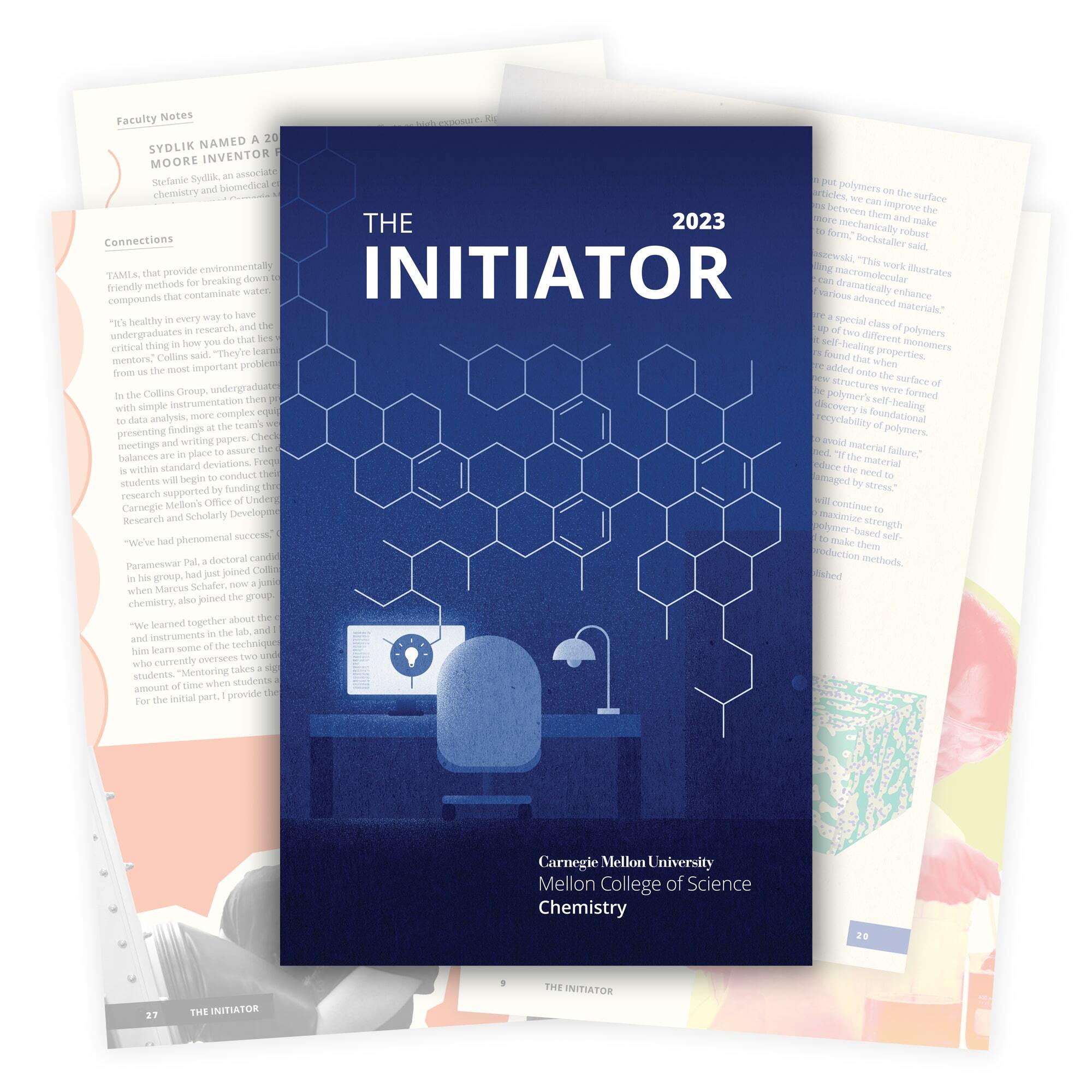Jacob Hoffman Synthesizes Medical Solutions
By Kirsten Heuring
Media Inquiries- Associate Dean for Communications, MCS
- 412-268-9982
Jacob Hoffman's love of chemistry started with a bang building fireworks and rockets in his Pittsburgh childhood backyard.
"At that time, you could get the required chemicals just by walking into a local pharmacy," said Hoffman, who graduated from then-Carnegie Institute of Technology in 1966. "With the Sputnik era, I got interested in rocketry. I tried to build my own rockets, but it didn't work. Fortunately, there were no catastrophes."
But the experience ignited a love of chemistry. As a Carnegie Mellon University alumnus, he built a career developing treatments for HIV, cancer and ocular and gastric disorders.
Hoffman developed formal chemistry skills through courses in the Department of Chemistry and through summer internships. One research internship with the U.S. Bureau of Mines at the Bruceton Research Center in Pittsburgh resulted in his first publication on early efforts in carbon-13 nuclear magnetic resonance spectroscopy (C13-NMR spectroscopy), which allows chemists to identify carbon atoms in organic molecules.
"After I graduated from Carnegie Mellon, my advisor, Professor P. Southwick, pointed me toward the University of Rochester, where I got my Ph.D.," Hoffman said. "I was the first person in our family who got that far along in education. That was a big accomplishment for me."
In the early 1970s, nuclear magnetic resonance (NMR) and mass spectrometry techniques were new, so his research group at Rochester encouraged the chemistry department to upgrade their instruments, which allowed these technologies to be more easily and routinely used to monitor progress with synthesis.
He went on to postdoctoral programs at Columbia University and the University of California Los Angeles, before joining Merck in 1973.
Hoffman worked at Merck at the company's Medicinal Chemistry Department in West Point, PA until retiring in 2005. He has more than 35 patents to his name, and he co-authored over 40 publications.
"I enjoyed working in a lab," said Hoffman, who keeps up with research and has maintained his membership with the American Chemical Society.
His first efforts at Merck were to design a potent H2-histimine inhibitor to treat ulcers since two similar drugs had recently come on the market. However, this project was eventually canceled.
The first viable drug Hoffman contributed to was a carbonic anhydrase inhibitor called TRUSOPT that is still available. The drops reduce pressure in a patient's eye caused by hypertension or glaucoma. The work was a team effort with two groups developing different structures for testing.
"One of my colleagues on the other team ultimately came up with a compound that went through clinical trials and got to the market," Hoffman said. "That was a big first success at getting a marketable drug for me."
One of Hoffman's most notable contributions involved researching treatments for HIV and AIDS starting in the 1980s, soon after the disease was discovered. Hoffman's team synthesized and published a paper on the first non-nucleoside HIV-1 reverse transcriptase inhibitor to effectively control the HIV virus. Unfortunately, the biologist who worked with his team discovered rapid viral mutations, which precluded further drug development.
His team then joined a much larger effort to develop an HIV-1 protease inhibitor to attack a different site in the viral cascade. This led to the development of Crixivan, common name indinavir sulfate, which was Merck's first protease inhibitor. The drug interferes with HIV-infected cells, so they produce fewer new viruses in the body.
Crixivan was approved by the FDA in 1996, though the drug was available to some patients at no cost before full FDA approval. This first protease inhibitor helped reduce the death toll associated with HIV and AIDS and paved the way for more effective combination therapies. It is still used today in some combination therapies.
In the 1990s and early 2000s, as he was finishing his career, Hoffman shifted his focus to finding drugs that could target tumors to inhibit their growth.
"We looked at a variety of different inhibitors for various signals that prompt tumor growth," Hoffman said.
Many of the compounds that seemed promising had solubility issues, so they could not be tested to see their efficacy. However, the work he started continued after he left Merck, and drugs to inhibit tumor growth continue to be investigated.
"A combinatorial group would do extensive screening to find something which had a particular activity they were interested in. Then from that, we could take the compound and try to improve it," Hoffman said.
Hoffman said he watched computational chemistry develop while he was at Merck. When computers were widely adopted in the 1980s, he worked closely with colleagues to use computer modeling to determine which compounds to analyze next.
Today, computational chemistry is an integral part of the industry and research conducted at Carnegie Mellon. Hoffman said that being a part of the advances in the science and technology was incredible.
"When I first started, you were making 10 grams of material or more to do preliminary testing," he said. "By the time I left, if you could get 10 milligrams, you could do a battery of tests. The scale changed drastically."
